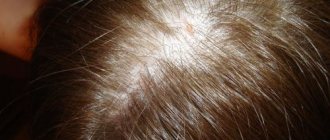Alcoholism is the scourge of the 21st century, affecting men, women, teenagers, and successful people. The addiction to drinking strong drinks develops over the years. Under the mask of an addiction lies a serious illness. It is impossible to get rid of it without medical help. Gradually developing into a life credo, a tolerant attitude towards alcohol leads to disastrous consequences.
What are the consequences of alcohol abuse?
The three stages of alcoholism represent three stages that obliterate a person's personality. Despite the stage of addiction, the patient is always in wait for the machinations of the “green serpent”. Alcohol intoxication occurs at any stage, but it is more common among heavy drinkers.
Intoxication, acetaldehyde poisoning, and the use of counterfeit alcohol lead to poor health, malfunction of vital organs, and mental disorders. Under the influence of a disease, a person plays with death, putting his life on the line. But he forgets that it is impossible to emerge victorious from this race. In an intoxicated consciousness, he rushes from corner to corner: either he shows signs of life, or he approaches the hour of an alcoholic coma. The consequences of post-alcohol coma do not go away without leaving a trace. But poor health is better than death. Death is the final station in alcoholic coma.
The toxic effect of ethanol affects all body systems and adds to the list of deaths in all countries of the world. Without recognizing the problem, once healthy and vibrant people become a statistical unit in the data of the World Health Organization. By deciding to return to sobriety, alcohol addicts will not be counted among the 3 million who have died. This is how many people die from alcoholism every year. Mortality from alcohol runs like a red thread through the life of a drinker and his loved ones. Relatives endure constant drunkenness, scandals, and aggressive behavior.
When witnessing mental and emotional disintegration, one must not hesitate. Having contacted the medical center in time, the relative helps the patient get out of the “blue hole”. By calling a narcologist to your home or going to a clinic department, many people save a person’s life. The doctor provides first aid based on an objective assessment of the condition, duration of alcohol use, stage of addiction, presence of pathologies and other diseases.
How much does an IV cost?
How much does an IV cost for a drunkard? Firstly, home-call IV drips and inpatient treatment are approximately equal in price. A public clinic usually charges less than a private clinic. Also, a lot depends on what to instill a person with. Here are examples of how much it costs to get rid of alcohol in some Moscow medical institutions:
| No. | Name of the medical center | Cost (rubles) |
| 1 | Medical drug treatment center No. 6 | 4.9 thousand |
| 2 | Ultra honey | 3 thousand |
| 3 | Narcology clinic “24/7” | 5.5 - 6 thousand |
| 4 | Alcovita | 3.3 thousand |
Infusion therapy for alcohol intoxication
Intravenous infusion of drugs is used to get rid of ethanol breakdown products, blood detoxification, tissue hydration, condition stabilization, normalization of acid-base and water-salt balance. Infusions are used against hangovers, binge drinking, and withdrawal symptoms. They have a similar effect, but differ in dosage and composition. The number of anti-hangover droppers ordered is less than that of binge drinking droppers.
A hangover in mild forms goes away with taking pills, but in severe cases it is impossible to overcome the signs of intoxication without infusion therapy. When poisoned, the body becomes dehydrated. Against the background of general malaise, symptoms of hangover syndrome appear:
- acute headache;
- nervous tension;
- strong thirst;
- sweating;
- nausea;
- poor appetite or lack thereof.
Binge alcoholics who have entered stage II-III of addiction are experiencing a particularly dangerous state. Withdrawal syndrome caused by improper withdrawal from alcohol causes:
- outbursts of aggression, fear, depression, mood swings;
- mental and sleep disorders;
- distortion of the nervous and cardiovascular systems;
- involuntary muscle contraction (spasms, cramps);
- tremor of the upper extremities.
All this adds to the symptoms of alcohol poisoning. The body is “torn” into pieces by terrible headaches, uneven heart rate, and vomiting. Wrong withdrawal from binge drinking threatens Korsakov psychosis, delirium (“delirium tremens”), and exacerbation of chronic diseases.
Withdrawal syndrome is never limited to just one symptom; its manifestations increase in severity. It causes a palette of unpleasant sensations, confuses the mind, inclines to indulge in all serious things or “whispers” suicidal feelings. Wanting to recover from their hangover, they return everything to normal - a multi-day drinking binge begins again. To get through a difficult moment, call a drug treatment clinic.
Contraindications and side effects
Since the composition of the drip to overcome binge drinking includes a wide variety of substances, there are a number of contraindications for the procedure:
- allergy to the components of the drug;
- acute renal failure;
- chronic heart failure;
- vascular diseases;
- diabetes;
- acute infectious diseases;
- mental disorders;
- epileptic seizures;
- severe liver damage.
Also, drips are not given to those whose binge drinking lasts longer than a week.
There are contraindications
It must be taken into account that all restrictions are quite conditional. The decision to use an infusion in each specific case is made by a narcologist, having familiarized himself with the patient’s condition and assessing the possible risks and benefits of the procedure.
It happens that after using a drip for binge drinking, the patient’s health worsens. Most often this manifests itself as follows:
- loss of appetite;
- shortness of breath appears;
- lethargy and drowsiness occur;
- aching joints;
- cardiopalmus.
The poor condition of a patient after a drip from binge drinking is most often caused by insufficient qualifications of the doctor who performed the procedure, incorrectly selected medications or dosages. If the procedure is performed by a specialist, most often side effects can be avoided.
Another dangerous complication is alcoholic psychosis, better known as “delirium tremens.” Most often it develops 1-2 days after quitting alcohol. An alcoholic with delirium loses awareness of where he is and what is happening around him. He experiences hallucinations (most often visual), which can cause inappropriate or dangerous behavior.
Is it possible to install an IV yourself?
Only doctors and people with medical training in nursing can administer intravenous medication to themselves or others. At home, desperate daredevils administer infusions. Assuming responsibility for the patient, it is necessary to carefully consider the upcoming manipulation, select the composition, and follow the algorithm for infusion therapy.
Having decided to “dig out” an alcoholic, they risk leading to infiltration, extravasation, and chemical burns. The slightest mistake will lead to tissue irritation, the development of contact dermatitis, damage to nerve fibers, and burns from alkaline and acidic liquids. By choosing the incorrect composition of the drip, they lead to drug anaphylaxis, lack of positive dynamics, and loss of precious time. Limit independent actions to preventive measures: give sorbents, sedatives, provide plenty of fluids. After calling a doctor, you need to monitor the alcoholic until the first aid team arrives.
Preparation and installation of the dropper
The installation is carried out by a qualified medical professional who thoroughly masters the manipulation technique, can calculate the exact dose of injected drugs, and also, if necessary, provide emergency care. It is advisable to place an IV in the hospital.
In the hospital
There are many advantages of the procedure: all the necessary medications are at hand, constant monitoring by doctors and clinic staff, and if the condition worsens, qualified assistance is immediately provided.
At home, withdrawal is carried out at stages 1-2. In case of chronic alcoholism, stage 3, the patient must be taken to the hospital. The IV is placed in a sterile treatment room. In almost all modern clinics, special catheters are placed in a vein so that a person is able to move his arm, sit down or stand up.
The rate of infusion depends on the patient's condition. The number of drops per minute is calculated by a narcologist. The severity of intoxication and the stage of alcoholism are taken into account.
At home
The procedure is performed only if the binge lasts less than a week and the person does not have a history of severe chronic diseases. Before a drip for binge drinking at home, a narcologist must take blood pressure readings, find out from the person whether he has allergies, and assess the condition of the skin.
The patient is placed on a bed or sofa, and the arm above the elbow is freed from clothing. The site of the future puncture is treated with an antiseptic and a needle is inserted from the system. After entering the vein, the needle is fixed with an adhesive tape. Either a bolster or a rolled up towel is placed under the patient’s elbow (necessary for convenience).
The speed of the drip is adjusted by the doctor. He monitors the patient throughout the procedure. After the solution in the sterile system runs out (after 45 minutes), the needle is removed from the vein, gauze with an antiseptic is placed on the puncture site and sealed with an adhesive plaster. After the procedure, the patient should rest for some time.
When can you get an alcohol drip?
Anti-alcohol therapy is permissible in case of ethyl alcohol poisoning, severe hangover syndrome, abstinence, and is prohibited in case of intoxication. Infusions are administered 6-7 hours after the last drink. In the morning, when the patient wakes up, urgent therapy is needed. Relatives or the alcohol addict himself should quickly call the clinic. It is important not to miss the moment - not to let you get drunk. Without breaking the vicious circle in time, the patient begins his own “Groundhog Day” - he continues to drink and poison himself with alkaloids.
How to carry out the procedure?
You can alleviate a person’s condition and get rid of a hangover in a medical facility or at home.
In the hospital
If a person’s condition is alarming, he will be hospitalized.
In the hospital department, a narcologist examines the victim, collects an anamnesis, which includes data on:
- patient's age;
- duration of drinking;
- the presence of chronic diseases;
- existing contraindications;
- drug resistance.
An emergency laboratory blood test is performed to reveal:
- glucose level;
- electrolyte ratio;
- cholesterol content;
- degree of intoxication;
- blood viscosity;
- pH indicator.
The data obtained make it possible to individually select the composition of drugs for an IV, depending on the patient’s condition. Throughout treatment, the doctor monitors the indicators to prevent excessive increases or decreases in values.
During the procedure, the patient should not be left unattended. After all, no one knows for sure how the body will react to any components of the composition.
Complications may develop at work:
- heart and blood vessels;
- brain;
- liver;
- kidney
At home
A dropper can be used at home to cleanse the body in case of alcohol poisoning. Typically, this decision is made by people who do not want to advertise their addiction to drinking among others (bosses, employees, relatives).
In this case, a doctor or nurse from the drug treatment department of the hospital or through official websites on the Internet is called to your home. The patient's condition should not be life-threatening. The invited health worker does not have the ability to monitor blood counts.
Therefore, the composition of the dropper at home includes:
- saline solutions;
- glucose;
- vitamins.
Typically, for home infusion treatment, one drop of 400-500 ml is sufficient. The procedure lasts 40-50 minutes. But the patient begins to feel an improvement in his condition within a quarter of an hour.
An increased amount of the drug should not be administered at a time. This will lead to overload of the excretory system, which is unacceptable in this situation. To ensure that the subsequent dropper does not cause harm, it is necessary to take a break between them for at least 2-3 hours.
How to get out of binge drinking
Overcoming intoxication is available at home and in the hospital. At home, the procedure is psychologically easier to accept. Doctors arm themselves with all available means to save a binge alcoholic. In case of severe clinical picture, hospitalization in a hospital department is required. Treatment in a hospital is no different from treatment at home.
Doctors combat withdrawal, post-withdrawal states with proven therapies. The infusion composition is selected based on medical history, severity of the condition, duration of drunkenness, stage and number of years of drunken lifestyle. When choosing medications, drug allergies to their components are excluded, the dosage is adjusted, and colleagues with a narrow specialization are involved in the treatment of inflammatory processes.
Advantages and disadvantages of IV drips during binge drinking
This is the best option for withdrawal from alcoholic delirium. The main advantages of a drug dropper:
- gentle action - the solution enters the vein slowly, so neither the heart nor the blood vessels are overloaded;
- effectiveness - after a quarter of an hour a person feels improvement;
- rationality - an IV can be installed in any condition of the patient;
- wide spectrum of action - any drugs can be added to the infusion - hepatoprotectors, diuretics, vitamins, etc.
The only disadvantage is that such a procedure does not completely cure a person from addiction. She only improves his condition. To completely get rid of alcoholism, you need to undergo treatment in a clinic.
Who needs help
People suffering from stage II-III alcoholism are at risk. From the beginning of the second stage, control over the amount of alcohol consumed is lost, psychological addiction to ethyl alcohol begins, and life priorities are replaced by drinking. Friday gatherings smoothly flow into Monday. In this option, they either stop and pull themselves together, or walk down an inclined path, bumping into the edge of the “blue hole.” Here the threat of alkaloid poisoning increases. The third stage is associated with a persistent craving for alcohol, mental, physiological and social disintegration of the personality. Here, intoxication manifests itself with enviable consistency and becomes a deadly threat.
After days of drinking, the body is exhausted, dehydrated, and weakened. It works for wear and tear, devoting its last vital resources to conserving energy, although its protective functions no longer resist the development of diseases. Constant alcohol abuse often becomes a trigger for polyneuropathy, cirrhosis, and necrosis of the pancreas. Fertile ground also arises for the development of heart disease, cancer, dementia, and mental disorders.
Detoxification alone is not enough to sober up binge alcoholics. Drinkers who abuse strong drinks for several days need blood cleansing. After 3-5 days of drinking, only a specialist - a narcologist-psychiatrist - will help.
The dangers of self-medication for alcohol poisoning
Medical professionals do not advise people who do not have special training to perform this procedure.
There are several nuances that can be harmful to health:
- allergy to components - when the drug is administered intravenously, the reaction occurs very quickly; it is difficult for a non-professional to provide timely assistance to the victim, but the doctor always has antidotes available;
- bruise (hematoma) at the site where a vein is punctured by a needle - this is facilitated by: weak walls of blood vessels; the needle is thick or of poor quality; increasing the speed of needle and medication insertion; blood clotting disorder; after the injection, the cotton wool remained at the injection site for less than 5 minutes, and the blood managed to pour out of the vein under the skin;
- inflammation of the veins (thrombophlebitis) - the inflammatory process occurs due to infection (violation of sterility rules);
- tissue necrosis (death) - appears when the injection solution gets under the skin and not into a vein.
Many people think that installing an IV in case of alcohol poisoning on their own within the walls of the house is easy and simple. This is true if you have a medical education. Otherwise, you can bring not relief, but harm to your health.
Who are contraindicated for IVs?
Infusions are prohibited when:
- kidney pathology;
- acute, chronic renal failure (ARF, CRF);
- cardiovascular diseases, pathology;
- diabetes;
- mental disorders;
- bronchial asthma;
- advanced age;
- cirrhosis;
- allergic predisposition to drug rejection.
For these reasons, patients are denied treatment at home and are hospitalized. Within the medical institution, 24-hour surveillance is carried out, biomaterials are collected for laboratory tests, and a full examination is carried out. Without equipment and medications the following are not excluded:
- response to the allergic process (redness of the skin, swelling, suffocation, rapid heartbeat);
- cerebrovascular accidents;
- angina pectoris, hypertensive crisis, myocardial infarction, stroke, thrombophlebitis;
- CNS depression, short-term loss of consciousness, coma;
- disorders of the central and peripheral nervous system;
- exacerbation of chronic forms of diseases;
- internal bleeding;
- epileptic seizure;
- cerebral edema;
- encephalopathy;
- mental disorders.
Refusing to go to the hospital, they do not treat injuries sustained in a fall. Under the influence of strong drinks, a shaky gait, uncoordinated movements of the limbs, and muscle weakness appear. Damaged cerebellar function provokes injuries.
Principles for prescribing IVs
In medicine, there are 2 types of binge drinking - true and false. A false one is called a pseudo-binge. This type develops in people who do not suffer from alcoholism. Most often it is associated with some events in a person’s life (both joyful and sad), for example, binge drinking from Friday to Sunday. In this way, people try to relax and relieve stress after a hard week of work.
Pseudo-binge passes without intervention from medical professionals. A person can cope with it on their own; no medications are required. After a hangover, the condition improves and the unpleasant symptoms disappear.
True binge drinking develops in people who suffer from alcohol addiction. It manifests itself at stages 2-3 of chronic alcoholism. The patient is unable to overcome it on his own. An IV will help suppress unpleasant symptoms and normalize the functioning of vital organs. Pills will not have the desired effect.
If a true binge develops, a person takes alcohol in large quantities for the first few days, and in the subsequent days only the dose that he needs to reduce the intensity of withdrawal symptoms. Detoxification is carried out using medications that accelerate the process of eliminating toxins, reduce symptoms of intoxication, and restore the functioning of affected organs.
The main tasks of a narcologist:
- motivate the patient to stop drinking alcoholic beverages;
- normalize his sleep;
- prevent and suppress the appearance of signs of alcoholic psychosis;
- relieve cravings for alcohol.
If the case is not advanced and the symptoms of intoxication are mild, then gastric lavage is performed and special medicinal mixtures are administered. At home, specialists resort to pyrotherapy (artificially increasing body temperature). For this purpose, Sulfozin or Pyrogenal is administered. This therapy helps suppress cravings for alcoholic beverages.
In severe cases, a drip is given for alcoholism. Its composition is selected individually. Sometimes it is enough to start an infusion with saline solution to speed up the process of removing toxins from the body and normalize the water-salt balance. Drugs that relieve cravings for alcohol are often added to it.
Contraindications and side effects
An alcohol drip is an effective way to combat binge drinking. It helps to quickly eliminate the symptoms of intoxication and improve a person’s condition. A one-time procedure does not give the desired effect. The patient will need the help of specialists.
Considering that the dropper contains various drugs, there are some contraindications for the infusion. The procedure is not carried out:
- for vascular diseases;
- chronic heart disease;
- neurological pathologies;
- diabetes mellitus;
- acute infection;
- severe damage to the liver and kidneys;
- mental disorders;
- epileptic seizures;
- alcoholic delirium;
- allergies to detoxification medications.
Do not put on an IV if the binge lasts more than one week.
Action and composition of droppers
Antidrinking drugs allow you to:
- remove the effects of toxins;
- cleanse the blood of ethanol breakdown products;
- stabilize water-salt metabolism;
- normalize alkaline balance;
- prevent dehydration;
- “unload” the nervous system, eliminate emotional imbalance;
- restore cognitive abilities;
- prevent stress on blood vessels and heart;
- avoid heart attack, stroke;
- equalize blood pressure, heartbeat;
- protect the liver;
- normalize kidney function.
To prepare the infusion composition, a glucose solution or a solution with sodium chloride is used as a basis. It includes detoxifiers, hepatoprotectors, plasma replacement drugs, B vitamins, and ascorbic acid. The following can also be added to the saline solution:
- angiotensive, antiemetic, antihistamines, sedatives;
- substances that relieve seizures;
- medications to replenish magnesium, calcium, potassium.
- For hydration and stabilization of electrolyte balance, use:
- Trisol, Disol, Acesol;
- glucose;
- potassium chloride;
- magnesia;
- Panangin.
A 4% soda solution is responsible for detoxification, restoration of blood volume, and normalization of alkaline balance. Due to it, pyruvic acid is transformed into lactic acid, and the amount of fatty acids and glucose decreases.
Eliminates the remains of ethyl alcohol in the blood with a 40% solution of glucose, insulin, B vitamins, nicotinic acid.
Prescribing the drug Naloxone requires a severe clinical picture. Special drugs are used for total intoxication. The goal of brain opiate receptor antagonists is to prevent respiratory arrest.
Do not self-medicate. Contact the clinic - the doctor will prescribe a treatment regimen and select the dosage of the prescription. The drug treatment center provides treatment for alcohol addiction, correction of mental and neurological disorders, and rehabilitation of alcohol addicts.
Author of the article: Yakovlev Evgeniy Anatolyevich
Narcologist, Candidate of Medical Sciences.
Education:
Russian State Medical University (1990-1996), Russian Academy of Postgraduate Education (1996-1998, residency).
The mechanism of action of an anti-binge drip
The principle of operation of a dropper for drug withdrawal from binge drinking is quite simple: through a catheter installed in the patient’s vein, the medicine enters directly into the blood, bypassing the digestive system and liver. This explains the rapid improvement in the patient's condition.
Binge drinking
Also, with this method, the narcologist has the opportunity to monitor the concentration of the active substance and, if necessary, adjust it. This helps to carry out the withdrawal procedure as gently as possible.
With the right approach, drips help not only to get a person out of binge drinking, but also to improve his general condition.
The doctor decides how many days to put the IV in, observing the patient’s condition. Typically, the course of procedures takes from two days to two weeks. During the day, 1-3 droppers are placed. To ensure constant access to the bloodstream, a catheter is installed in the vein, which remains there until the course is completed. It is used not only for a dropper, but also for one-time administration of drugs using a syringe.
The duration of one procedure is on average 35 – 45 minutes. All this time, a health worker should be next to the patient to monitor the process.
Price
For final withdrawal from binge drinking, hospitalization of the alcoholic is required. There are several drug treatment centers in Moscow and the region that offer this type of service to their patients. The procedure is not free, but the end result is fast and reliable. The main thing is to entrust the health of the sick person to a professional narcologist and not skimp on emergency treatment. Here are approximate prices for the capital with the names of drug treatment clinics:
| Name of drug treatment center | Cost of withdrawal from binge drinking, rub. |
| Psychiatric and drug treatment clinic named after S.S. Korsakov | 3 000 |
| Narcological center Mozhaika 10 | 2 500 |
| Medical | 3 500 |
Contraindications to “home” treatment
You can try your hand at getting the patient out of the binge yourself. However, to do this, some requirements must be met:
- The binge should not be prolonged (no more than 7 days)
- The patient has a history of diabetes mellitus
- Binge drinking is accompanied by attacks of bronchial asthma
- The patient suffers from cardiovascular diseases
- The patient is over 50 years old
- Presence of delirium tremens attacks
If you discover the presence of at least one point, you should not attempt to break out of binge drinking on your own; entrust this matter to professionals.
Remember that there are situations when hospitalization of a patient is an absolute necessity! An IV drip can be administered at home only if the patient does not have complications of addiction. If the binge has a complicated course, the drip should only be carried out in a medical facility. A complicated course of binge drinking is considered to be:
- The binge lasts more than 1 week.
- The patient exhibits any signs of alcoholic psychosis or other mental disorders of any severity.
- The patient has chronic diseases such as diabetes, cardiovascular diseases, and bronchial asthma.
- Old age of the patient.
Features of withdrawal from binge drinking through IVs
If the patient is drunk, in the absence of medical education, it is not recommended to give him an IV at home. It is advisable to carry out infusion therapy in a hospital, but it is important to first ensure that there are no contraindications or side effects. Features of performing a drip to detoxify the body are presented below:
- detoxification therapy must be carried out in full course, without violating the prescribed time intervals;
- It is first necessary to exclude the presence of diabetes mellitus, chronic heart disease, and bronchial asthma;
- treatment of an alcoholic lasts several hours, while the drunken patient takes a horizontal position;
- the composition of medicinal solutions contains sleeping pills, so after a dropper a person can fall asleep for several hours;
- Vitamins are added to the dropper to strengthen the immune system and increase the body's resistance to toxins and poisons.
Droppers at home: composition and dosage
If it is not possible to go to the hospital, you can try to prepare the solution yourself. The main thing is to follow the recipe exactly, and also consult a doctor to eliminate the possibility of complications . To get out of binge drinking you need:
- 300 ml sodium chloride.
- 400 ml of glucose solution with insulin.
- 350 ml Disol.
- 400 ml Gelatinol or Hemodez.
This recipe is the safest. It is almost impossible to do any harm with such a dropper, especially if you follow the indicated contraindications.
What kind of drips are used when withdrawing from binge drinking?
You cannot prescribe medicine on your own; you need to consult a specialist . As a rule, a narcologist suggests instilling the following drugs:
- Saline solution.
- Polyionic drugs (for example, Disol).
- Glucose with insulin.
- Plasma-substituting detoxification solutions (Gelatinol, Hemodez).
- Sedatives with anticonvulsant and vasodilating effects (magnesium sulfate).
- Medicines that eliminate withdrawal symptoms (Thiamin).
- Vitamin complexes (Panangin, Ascorbic acid).
- Hepatoprotectors (Essentiale).
- Detoxifiers (Solcoseryl, Unithiol).
Such droppers have a complex effect: they relieve hangovers, eliminate pain, and heal internal organs. But they are not suitable if you need to make a solution and dig out an alcoholic yourself.
Symptoms of binge drinking and methods of withdrawal from it
First of all, alcoholism is a type of drug addiction that allows you to take a person into the mythical world of dreams. Where there are no troubles and sorrows of the real world.
Drug addiction does not solve problems, but only worsens the situation and general health. In binge drinking mode, a person cannot adequately control his place in the real world, and becomes aggressive and pathologically rude.
Any person can drink, not even an alcohol addict, but bring him to a normal state by eliminating intoxication of the body, and dripping is intended as a medical procedure. The following symptoms are indications for treatment:
- headache that increases over time;
- lack of coordination, even with a stationary, horizontal position of the body;
- changes in body temperature and sweating;
- uncharacteristic feeling of thirst, dehydration;
- frequent gagging, urination, and sometimes diarrhea.
These symptoms are dominated by an irresistible craving for alcohol as a means of alleviating general poor health. Here it is simply necessary to dig out a person in order to preserve his vital functions.
Treatment of alcohol addiction in
In our drug treatment center, you can always get emergency treatment for drunkenness, as well as undergo a treatment course for alcohol addiction, which will allow you to forget about this problem forever. Our specialists are attentive to each patient, we do not leave you unattended after an emergency call, because a person may become ill after an IV from heavy drinking. After long-term treatment, the former addict is also not left alone with his problems; we carry out social adaptation on an outpatient basis after discharge.
You can contact us for help at any time of the day; our hotline consultants accept calls seven days a week and without breaks. If you need urgent help during a period of heavy drinking or there is a need to organize treatment for alcoholism, call us right now, together we will definitely solve your problem. You will see the phone number on the website page, and there is also a feedback form, you can fill it out, and our specialist will contact you.
Contraindications
For some patients, intravenous drips are strictly contraindicated.
Infusions are carried out especially carefully:
- Patients with cardiovascular pathologies;
- Elderly;
- With a binge that lasts more than a week;
- If you have bronchial asthma or diabetes.
In order to avoid possible complications, it is necessary to carefully collect the patient’s medical history, that is, question him, listen to all his complaints, find out about the presence or absence of any chronic diseases. Doses for infusion are selected individually.
There are certain groups of patients who need to be treated with special attention:
- aged people;
- people with cardiovascular diseases;
- patients with chronic diseases of other vital organs: liver, kidneys, lungs;
- persons diagnosed with diabetes mellitus or bronchial asthma;
- HIV-infected;
- pregnant and lactating women;
- patients with neurological status;
- if the binge lasts more than 7 days.
Patients undergo treatment only in specialized drug treatment hospitals. This is due to the fact that treating such patients at home is fraught with serious complications.
Acute hangover syndrome, deep intoxication of the body, alcoholic tremors are the main reasons for calling a qualified narcologist and carrying out this procedure.
Contraindications: severe kidney or liver disease. The main disadvantage of manipulation is its short-term effect. Often, alcohol addicts who feel relief after one day of such therapy begin to believe that their problems are quite easily solvable.
How long does the session last and its cost?
such a procedure is not expensive, and its price fluctuates around 500 rubles.
In general, it is not recommended to carry out such a procedure at home, even by a competent doctor. After all, at home it will not be possible to create the same sterile conditions as in a medical facility. In addition, the doctor may use low-quality drugs to obtain even greater benefits. Therefore, it is better to refuse the procedure altogether than to perform it at home.
The duration of a digging session is approximately 40-60 minutes. However, in severe cases, the procedure can take up to several hours. This happens when a person has not stopped drinking for more than a week, and he is taken to the hospital in extremely serious condition. If the hangover is not severe, then to help the person it is enough to administer a small bottle of solution intravenously. It takes a little time to dig it out - less than half an hour.
Recovery after binge drinking
If the drip for withdrawal from binge drinking is installed successfully, the second stage begins - the recovery stage. A person who has suffered such severe poisoning, after prolonged drinking, needs to strengthen the body’s strength and restore the functioning of all internal systems. Therefore, one detoxification procedure will not be enough. Additionally, they put in a drip, which will help you return to normal.
The composition of such a dropper is standard. It consists of sodium chloride or glucose solution. Other drugs are also added that have a beneficial effect on the human psyche and psychosomatics.
Let's consider which drugs promote rapid recovery from such a condition.
Vitamins
Vitamin B1 is most effective in restoring the body after a long binge. It oxidizes alcohol and cleanses the body of poisons. Vitamins A, C and E have an antioxidant effect. They prevent cell destruction and promote their regeneration. Vitamins PP and B2 are administered to normalize all biochemical processes in the body after a prolonged binge.
Hepatoprotectors
Drugs in this group protect liver cells from destruction and normalize their functioning. Hepatoprotectors contain phospholipids, which are building materials for them. The drug "Essentiale" has proven itself very well. It is mixed with the patient’s blood and administered intravenously at 5-10 ml.
"Essentiale" is suitable for intravenous administration
Nootropic drugs
They have a beneficial effect on brain activity, improve memory, attention and increase the body’s resistance to stress. These drugs return the patient to a full lifestyle, replenish lost strength and energy.
Glucose
Most patients who suffer from long-term binge drinking experience a decrease in blood glucose levels. Therefore, glucose-containing preparations are a source of replenishment of this substance. Glucose is administered along with insulin for better absorption.
Along with glucose, additional drugs can be administered: insulin, magnesia, potassium chloride, Panangin. These drugs correct electrolyte imbalances. With prolonged heavy drinking, the human body becomes depleted. He suffers from a lack of vital microelements, which can cause the development of heart failure and aggravation of the patient’s general condition after heavy drinking.
Sodium bicarbonate (soda) solution 4%
This drug helps restore the lack of fluid in the body, normalizes blood flow and has a beneficial effect on all internal systems. It is recommended to administer this drug under the supervision of a narcologist.
Sodium bicarbonate solution will replenish fluid deficiency
Why do you need the help of a narcologist when you binge drink?
When binge drinking, there are several serious reasons to call a specialist at home or go to the clinic. First of all, the alcoholic himself will not be able to stop his drinking state. If he could endure withdrawal symptoms, then the binge would not have started at all. A sick person has two options to eliminate painful symptoms: use the help of a narcologist or drink the next glass.
Taking anti-binge pills on your own instead of an IV administered by a qualified doctor is a rather dangerous activity, especially if the binge is long-term. After all, at this time the work of the heart, kidneys, and liver is already impaired under the influence of toxins; these organs do not perform their functions fully. To restore the functioning of all body systems and carry out rapid detoxification, infusion therapy performed by a professional is needed.










